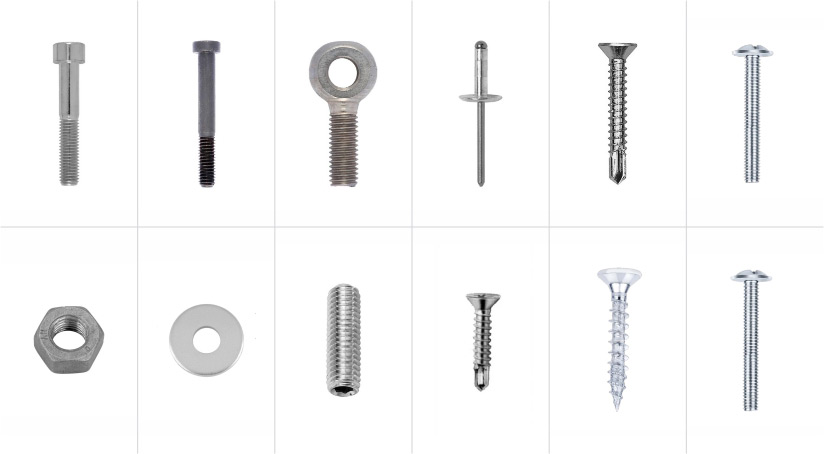When browsing the nut, bolt, and screw aisle in your local big box hardware store the options can often be a bit daunting. Rows and rows of screws, nails, bolts, and other types of fasteners all stare down at you, begging for your purchase. Flashy packaging, multitudes of sizes, drive types, lengths, different alloys, and more can all add to the confusion. What fastener is going to work best for your project? It can seem confusing when among that plethora of choices, but thankfully we’re here to help.
Bolts, Nails, or Screws?
As we’ve pointed out, there are literally thousands of different types of fasteners to choose from, but we’re going to keep it simple and stick to the three most common types of fasteners used in home improvement projects: screws, nails, and bolts. While some projects might use a specialty fastener like a hanger bolt, a rivet, or some kind of specialty boatbuilding fastener we’re going to stick to what is most commonly used in home improvement, as entire volumes could be written about fasteners and their uses.
When to Use Nails
Nails are one of the most commonly used fasteners in home construction. They are great for light construction jobs like attaching roofing shingles, trim, and general framing. Nails are fast, easy to drive, and relatively inexpensive when comparing to other options. Their holding power comes with their excellent shear strength. Being less brittle than a screw, they bend rather than snapping when loaded with a shear load. Their downfall is that they aren’t as good with twist or tension loads. They can easily be pulled vertically out, and will not hold a vertical force well. Certain nails such as ring shank nails have tried to combat this inherent weakness by adding rings on the nail’s shank portion, but they’ll never be as good at holding vertical loads as our next option.
When to Use Screws
We’ve all seen them and know what they are, but when is is best to use a screw as opposed to a nail? Think about them as having the opposite strengths and weaknesses of a nail. Screws are excellent at holding vertical forces, but are (mostly) too brittle to do well with shear loads. Some specialty screws will try to combat this by being made of a different type of alloy, but for the most part nails should be used for shear loads and screws for vertical loads.
One of the most common types of screw you’ll find is a wood screw. Wood screws are only partially threaded so that the board you’re attaching isn’t threaded on, but rather held down by the head of the screw. This allows for an extremely tight fit when the screw is driven in hard. You’ll find that wood screws can be made of all different types of materials depending on your intended use. Stainless steel screws might be used for exterior work, coated screws for decking, or drywall screws for drywall! Don’t make the mistake of using the wrong screw for it’s intended purpose. Specialty screw even go so far as to be made out of expensive corrosion resistant alloys such as silicon bronze for activites like boatbuilding.
Silicon bronze wood screws would be great for your boat, but could also be used in the home as accent pieces as they are quite beautiful.
When to Use Bolts
Bolts are the best of both worlds. A big lag bolt or carriage bolt has great holding power for both shear loads as well as vertical loads. So why aren’t they used for everything? Bolts are expensive, and also take a long time to install as opposed to just pounding in a nail or firing up your drill to drive in a screw. First a clearance hole must be drilled, the bolt dropped in, and a nut and washer put on the threads. In the time it takes to install a bolt, a hundred nails could be driven in with a nail gun. Stick to using through bolts when fastening large beams, or lag bolts when a secure attachment to a foundation is needed for example. Bolts are great, but if every house was built solely out of bolts they’d be 3X the price and take 5X as long to build!!
Final Words
Now these are just a few different types of fasteners that can be used on your home improvement project. When there is more time, and in a different article, we’ll happily get in to all of the head types, drive types, and even some of those specialty fasteners. I mean, what even is a frearson drive?!
Follow Home Inside for more!
